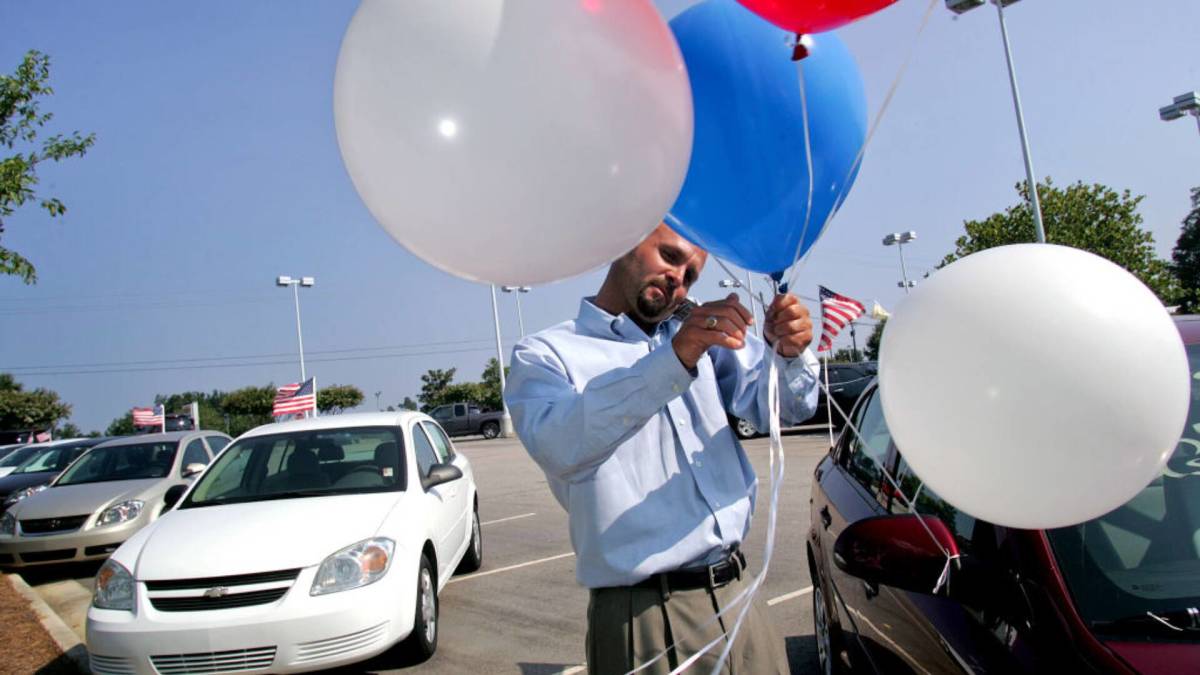[ad_1]
Economists spend their entire careers trying to determine the logical effect macroeconomic causes, like tariffs, have on the average consumer.
But what they learn in the classroom sometimes doesn’t translate into real-world situations.
Even consumers don’t know how they’ll react to tariffs.
A February consumer poll from CivicScience revealed that six in 10 Americans would find an alternative brand or stop purchasing an impacted product if their favorite brand were impacted by tariffs.
The U.S. universal 25% tariffs on autos took effect in April; the 25% duty on automotive parts went into effect a month later.
Since then, U.S. car buyers have flocked to dealerships to snap up inventory before carmakers passed the price increases down to customers.
Markets are rewarding those car buyers looking to switch brands amid the price fluctuations.
According to a new report from Cars Direct, major automakers are paying buyers up to $2,000 to switch brands.
These so-called “conquest cash incentives” are offered to customers looking to buy or lease their next vehicle, and often, the incentive is stacked onto other offers.
New-vehicle sales are starting to run out of steam
New data from Cox Automotive this week shows that while new vehicle sales rose in September, there is still cause for concern.
New-vehicle sales rose 6.7% in September, and while that is a strong top-line number, the underlying stats tell a slightly different story.
While new-vehicle sales were up year over year, volume decreased sequentially from August by 14.2%.
Meanwhile wholesale used-vehicle prices fell slightly in September, according to the Manheim Used Vehicle Value Index, but increased 2% year over year.
Related: Waymo shows the secret to avoiding traffic tickets in funny video
“As we close the books on Q3, we’ve continued to see wholesale values remain elevated against normal depreciation trends, even with declines in September and right as tax incentives on EVs come to an end,” said Cox Automotive Deputy Chief Economist Jeremy Robb.
“Both new and used retail sales were fairly elevated over most of Q3, but we started to see some declines in the last few weeks of September.”
EVs remained popular in the quarter as consumers looked to take advantage of the $7,500 EV tax credit before it expired on September 30.
They rushed to purchase both new and used electric vehicles.
“Consumers kept the pace of new and used EV purchases high over the quarter, prior to the expiration of the tax incentive. This heightened demand pushed EV wholesale values higher again this month, making EVs the strongest-performing segment in year-over-year value appreciation,” Robb said.
Tariff pricing brings car buyers to lots
Car buyers may have been nervous about prices after President Trump’s “Liberation Day” tariff announcement, but carmakers have eased those concerns by offering incentives.
“Automakers are providing healthy incentives to keep sales flowing. Prices are trending higher, but just as we are seeing in the broader retail markets, there’s sufficient demand and generous incentives out there, and that’s driving the market,” said Cox Automotive Executive Analyst Erin Keating.
But even that trend is turning.
According to Kelley Blue Book data, the new vehicle average transaction price was $49,077 in August, a 0.5% increase from July and a 2.6% increase year over year.
The average new-vehicle MSRP, also known as the “asking price,” rose 3.3% year over year to $51,099 in August, the most significant gain in 2025.
Of the 31 car brands tracked by Kelley Blue Book, only five recorded lower ATPs in August.
Car brands with lower August ATPs:
- Acura (down 6.5%)
- Tesla (down 5.5%)
- Stellantis’ Dodge, Ram, and Chrysler (down less than 1%)
Related: Luxury automaker takes major hit
[ad_2]

